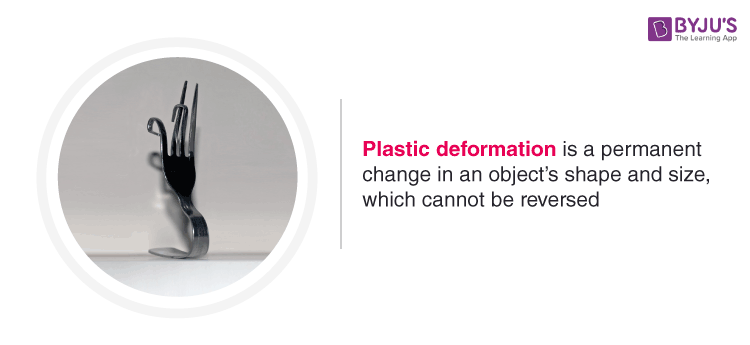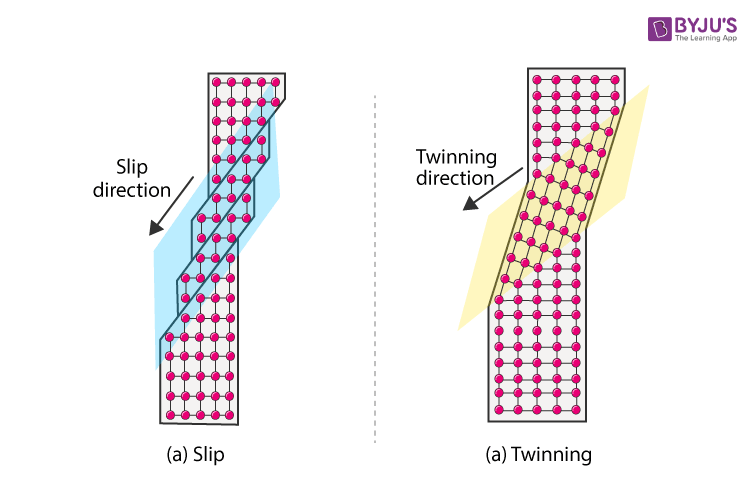Deformation often referred to strain, is the change in the size and shape of an object due to the change in temperature or an applied force. Depending on the size, material and the force applied, various forms of deformation may occur. Based on these factors, deformation is classified into the following:
- Elastic Deformation – The deformation caused is reversible, and the deformation disappears after the removal of applied forces. A classic example of elastic deformation is the stretching of a rubber band.
- Plastic Deformation – The deformation is irreversible and it stays even after the removal of the applied forces. Example, bending of steel rods.
Plastic deformation is studied in experiments with spring where Hooke’s law is explained to differentiate between the plastic materials and elastic materials.
What is Plastic Deformation?

Plastic deformation is defined as a process in which the object due to applied force changes its size or shape in a way that is not reversible. Plastic deformation is seen in many objects, including:
- Plastics
- Metals
- Soils
- Rocks
- Concrete
The mechanisms that cause plastic deformation differ widely. Plasticity in metals is a consequence of dislocations while in brittle materials such as concrete, rock and bone, plasticity occurs due to the slippage of microcracks. There are two prominent mechanisms of plastic deformation in metals and they are
- Slip
- Twinning
Slip and Twinning
Slip is the prominent mechanism of deformation in metals. A slip involves the sliding of blocks of crystal over one another along different crystallographic planes known as slip planes. In twinning, the portion of crystals takes up an orientation related to the orientation of the rest of the untwined lattice in a symmetrical and definite way. In the image given below, the depiction of slip and twinning deformation in a face-centred cubic crystal is shown.

Pressure and heat are used to shape objects into the desired form. The speed of stress causes rapid material changes, and at times, unable to conform to the structural changes the material may break. Plastic deformation used in the manufacture of goods is carried out under controlled heat and pressure allowing the material to adapt to the structural changes and incrementally bending until the preferred shape is obtained. Hard thermo-setting plastics, crystals and ceramics have minimal plastic deformation ranges.
Difference Between Slip and Twinning
Given below in a table are the various differences between slip and twinning
| Slip | Twinning |
| Occurs in discrete multiples of atomic spacing | The movement of atoms is lesser in atomic spacing |
| The orientation of the crystal above and below the slip plane is the same after deformation as before. | Orientation difference takes places across the twin plane |
| Occurs over a wide plane | Every atomic plane is involved |
| Slip occurs when shearing stress on the slip plane in the slip direction strikes a threshold value known as the critical resolved shear stress. | No critical resolved shear stress for twinning. |
| Takes places in several milliseconds | Takes place in few microseconds |
| Slip lines are present in even or odd numbers | Twin lines occur in pair |
Stay tuned to BYJU’S to learn more about deformations.
Also, Read
| Deformation Of Solids | Elastic Behaviour of Solids |




Comments